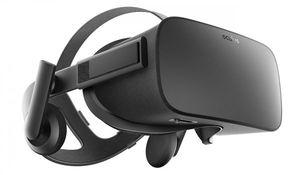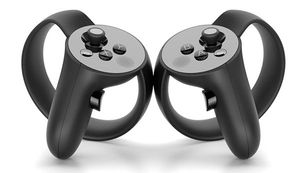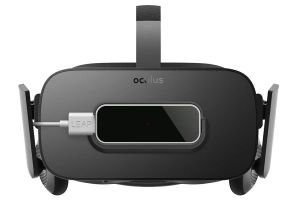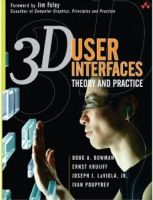Difference between revisions of "CSE165W2017"
(→Description) |
(→Description) |
||
| Line 7: | Line 7: | ||
This course teaches the design and evaluation of three-dimensional (3D) user interfaces and interaction techniques. The course consists primarily of lectures and hands-on programming projects. Students will be expected to implement several 3D interaction techniques as part of this course, using state of the art 3D input devices. The course is intended to lay the foundation for 3D user interaction as it can be applied to novel user interfaces for computer games and consumer electronics, as well as virtual reality and augmented reality applications. | This course teaches the design and evaluation of three-dimensional (3D) user interfaces and interaction techniques. The course consists primarily of lectures and hands-on programming projects. Students will be expected to implement several 3D interaction techniques as part of this course, using state of the art 3D input devices. The course is intended to lay the foundation for 3D user interaction as it can be applied to novel user interfaces for computer games and consumer electronics, as well as virtual reality and augmented reality applications. | ||
| − | An important aspect of the course are going to be programming assignments involving 3D interaction devices, which are going to be provided to the students for the duration of the assignments. These devices will include the Oculus Rift with Touch controllers and the Leap Motion. The assignments can be done in C++ with OpenGL, or in a VR authoring toolkit such as Unity 3D, Unreal Engine or Lumberyard. | + | An important aspect of the course are going to be programming assignments involving 3D interaction devices, which are going to be provided to the students for the duration of the assignments. These devices will include the Oculus Rift VR HMD with Touch controllers and the Leap Motion gesture tracker. The assignments can be done in C++ with OpenGL, or in a VR authoring toolkit such as Unity 3D, Unreal Engine or Lumberyard. |
<center> | <center> | ||
| Line 18: | Line 18: | ||
| Oculus Rift | | Oculus Rift | ||
| Oculus Touch | | Oculus Touch | ||
| − | | Leap | + | | Leap Motion |
|} | |} | ||
</center> | </center> | ||
Revision as of 01:11, 10 January 2017
Contents |
CSE165: 3D User Interaction
Description
|
This course teaches the design and evaluation of three-dimensional (3D) user interfaces and interaction techniques. The course consists primarily of lectures and hands-on programming projects. Students will be expected to implement several 3D interaction techniques as part of this course, using state of the art 3D input devices. The course is intended to lay the foundation for 3D user interaction as it can be applied to novel user interfaces for computer games and consumer electronics, as well as virtual reality and augmented reality applications. An important aspect of the course are going to be programming assignments involving 3D interaction devices, which are going to be provided to the students for the duration of the assignments. These devices will include the Oculus Rift VR HMD with Touch controllers and the Leap Motion gesture tracker. The assignments can be done in C++ with OpenGL, or in a VR authoring toolkit such as Unity 3D, Unreal Engine or Lumberyard.
Course ScheduleClick here for the course schedule. It lists lecture dates, homework due dates, and recommended reading. Topics
Prerequisites
Format
GradingTBA You will find your homework and other scores on TritonEd. Please verify a few days after after every due date that your score has been recorded correctly and inform your grader if you find an error. There will be no assignment or indication of letter grades corresponding to scores on the individual exams and homework projects. The final grade depends on a weighted average of all the scores. The following grading key will be used:
For undergraduate students with the P/NP option: A pass (P) grade will be given for an average score of 60 or higher. For graduate students with the S/U option: A satisfactory (S) grade will be given for an average score of 75 or higher. Homework AssignmentsTextbookAlthough the textbook is not quite up to date, it is recommended, but not mandatory. The lecture slides will be made available after each lecture and there will not be reading assignments. Occasionally the lecture slides will be available before the lecture, but you can always use last year's slides if they are not - although this year's will be significantly updated.
Students with DisabilitiesIf you have a documented disability, please bring your documentation to me as soon as possible so that I can make suitable accommodations for you. If you believe that you have a disability and desire accommodation, please register with the Office for Students with Disabilities. Resources |



